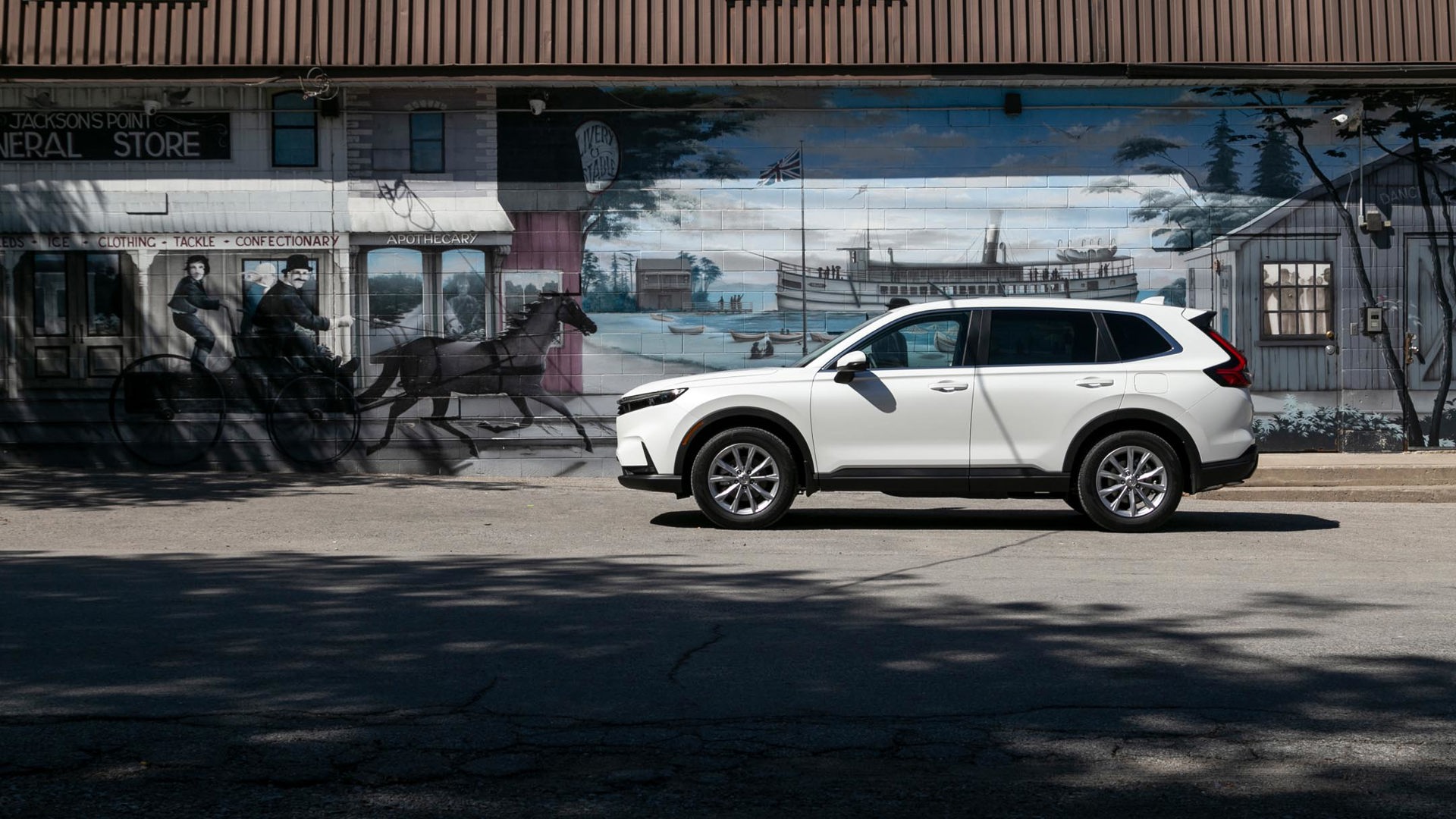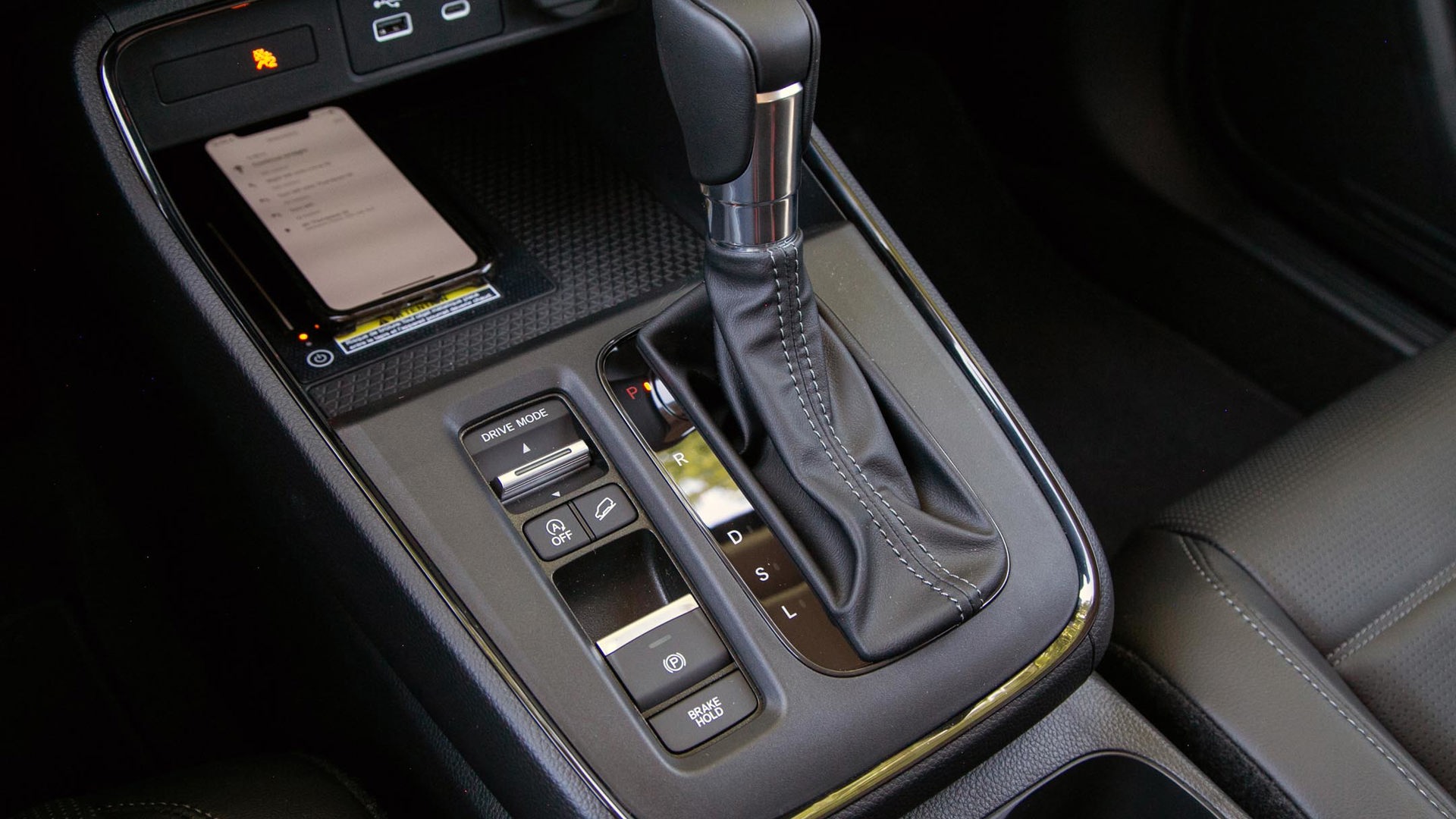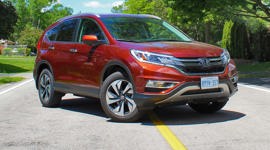When updating a best-seller, the smart move is to make evolutionary changes rather than revolutionary ones, and that’s exactly what’s happened with the 2023 Honda CR-V.
This compact crossover isn’t just Honda Canada’s sales leader – it’s the hottest-selling model for the brand in the United States, too. For 2023, the CR-V is almost entirely new, but it carries on delivering what consumers have loved about it in previous generations.
Practical Changes
The outgoing CR-V was already among the most spacious in the class, and the new model expands further, offering incrementally more space – most notably rear-seat legroom. Meanwhile, the cargo area in the new CR-V has grown to 1,028 L, and it can be made even more roomy (1,113 L total) by lowering the load floor in all but the top-trim models. Honda claims that figure is class-leading. With the 60/40 split rear seat folded, 2,166 L of real estate is available.
Even the console between the front seats will swallow nine litres of stuff, continuing a Honda tradition of finding clever storage solutions throughout the cabin. Curiously, Honda no longer has the convenient levers in the cargo area for lowering the rear seats, requiring a reach to the seatback, or a walk to either passenger door to do the job.
A mid-trim EX-L model was available for testing, revealing the collection of small improvements that have resulted in an all-round better CR-V. The added interior space is always welcome, and a new seat design is said to reduce driver fatigue (time behind the wheel wasn’t really long enough to confirm that claim), but among the most notable improvements are the repositioned windshield pillars. The base has been moved back a significant 119 mm (4.7 in), while the glass itself is 71 mm (2.8 in) wider and 36 mm (1.4 in) lower. Combined with repositioned door mirrors, visibility from the driver’s seat has improved noticeably.
Family Matters
The CR-V’s interior design was also thoroughly reworked, drawing significant inspiration from its Civic sibling, including the stylish hidden vents behind the honeycomb style dash-wide grate, and the same trio of climate control knobs. Overall, it’s an ergonomic triumph, with this contemporary design that’s both simple and functional – the latter of which is sorely lacking in far too many cockpits these days. It’s a cleaner look than the last CR-V and, with the infotainment screen moved higher, it’s also easier for the driver to check information at a glance and return their attention to the road.
LX and Sport trim CR-Vs use a seven-inch touchscreen with wired Apple CarPlay and Android Auto, while the EX-L and Touring trims get a nine-inch screen and wireless smartphone connectivity, plus a wireless phone charger. The system uses bright, colourful graphics and easy usability to be another area of significant improvement.
Based on Honda’s global architecture, the new CR-V’s wheelbase has been stretched more than 40 mm (1.6 in) and the track has been widened 10 mm (0.4 in). Along with a claimed 15 per cent improvement in torsional rigidity, the CR-V is more stable than before. Honda claims a sportier drive this time, however, that’s a relative term; and while the new model offers competent body control, the steering is completely void of any road feel and will surely prevent anyone from mistaking it for a Civic Type R.
Power to the People
Engine noise becomes intrusive under hard acceleration, when the automatic continuously-variable transmission (CVT) still creates a slight rubber-band feeling and causes the revs to rise and hold until the vehicle gets up to speed. While Honda claims this CVT is quieter and improves driveability through simulated gear changes, it still falls short of a traditional automatic like the one found in the rival RAV4 from Toyota.
The engine is the one aspect of the CR-V that has received only a minimal update, with the familiar 1.5L four-cylinder getting an enhanced turbocharger and exhaust ports to enable the peak torque of 179 lb-ft to arrive 300 rpm sooner. The 190 hp is unchanged from the last one, but Honda says it’s available over a broader rev range, allowing greater driveability. On the road, the CR-V has adequate power to comfortably get around town and provide reasonable passing abilities.
Top-of-the-line Touring models will come with a hybrid powertrain that increases output to 204 hp and 247 lb-ft of torque. Honda anticipates up to 50 per cent of CR-V sales in Canada will be electrified; however, that will surely be based on the hybrid drivetrain being offered in lower trim levels, plus the addition of a future plug-in hybrid (PHEV) variant.
Safety and Styling
Honda is targeting top safety ratings for the CR-V, and with its standard suite of advanced functions having been updated with radar sensors and a camera that has a broader field of view, it offers greater collision avoidance and programming for improved pedestrian and cyclist recognition. Plus, the new airbag design Honda introduced with the Civic that helps protect occupants from offset collisions is now incorporated here, too.
One of the biggest changes for the new CR-V is styling. Although the rear view and profile are clearly derivative of the last generation, the front end receives Honda’s bolder design language applied to all its SUVs and the Ridgeline pickup, while also incorporating the marque’s recent trend to extend the hood forward. The net result is a slightly more rugged design than last year, but the CR-V is still decidedly conservative compared to many of its flamboyantly-styled competitors.
Final Thoughts
Toeing the conservative and highly-practical line has worked exceedingly well for the CR-V in past years, so it makes sense to carry on in that direction. This new model successfully builds on the strengths of the well-executed and highly-popular previous-generation CR-V and is poised to continue as a strong competitor in the segment and a sales winner for Honda.
The 2023 Honda CR-V LX, Sport, and EX-L models are expected to arrive in showrooms this October, with the Hybrid Touring model anticipated before the end of the year. Pricing has increased this time around, with a range of $36,740 to $50,840 before tax but including a non-negotiable freight charge of $1,950.









































